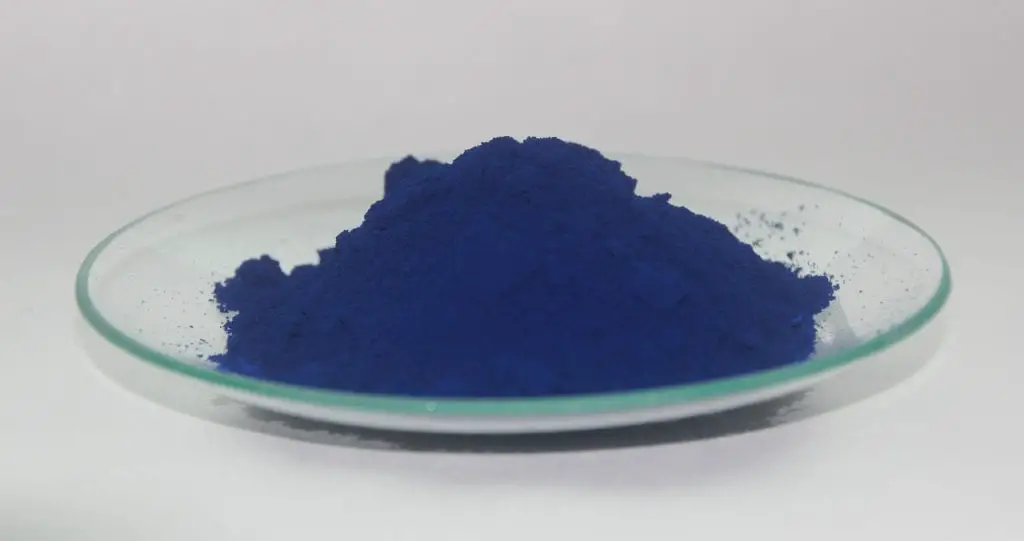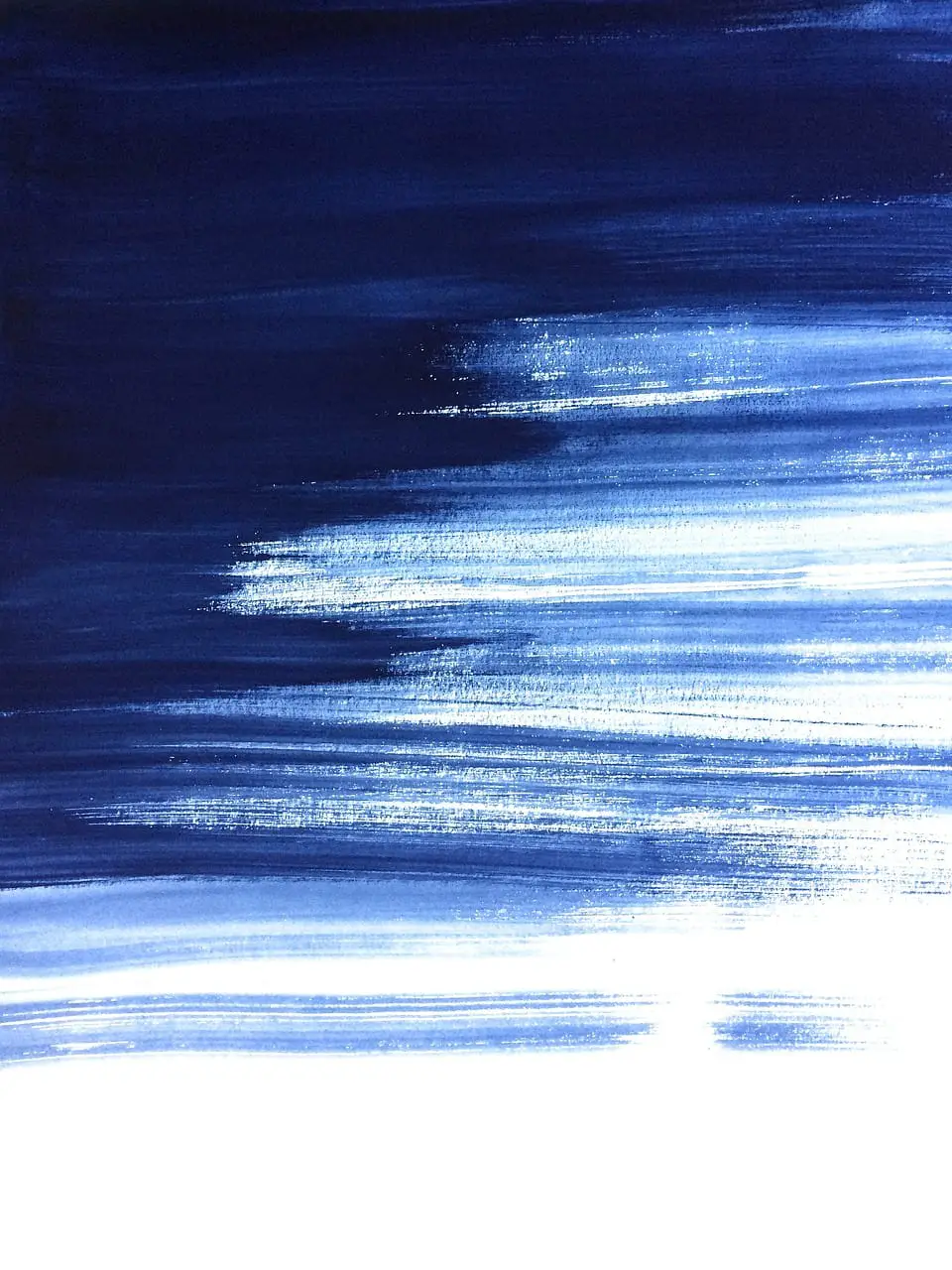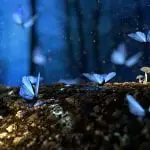‘Japan Blue’ – the color associated with the Japanese Indigo dye has become popular throughout the world. The intense richness, durability, and inherent properties of the Japanese Indigo dye have made it a major player in Japanese style, design and fashion.
The Japanese Indigo dye has a rich cultural history. An integral part of Japan’s history, within the nation, Japanese Indigo dyeing is ‘Aizome’ which literally translates to ‘Japanese Blue’.
Dating back to the 10th Century, the process of making, processing and using Japanese indigo dye has existed throughout centuries in Japan. Today, Japanese Indigo dyeing is a respected artisanal industry which includes generations of expertise among families and businesses.
The History of the Japanese Indigo Dye
The word ‘indigo’ has its roots in the Roman word ‘Indicum’. This word means a product from India. However, it’s believed that it was the Chinese that introduced indigo to the Japanese through trade.
Growing and using indigo goes back to Ancient Japan. It was present during the Heian era (794-1185 AD). Records of indigo use early in Japan show that it was originally the wealthy and the samurai class that used clothing made from indigo dye. However, that changed completely during the Edo period (1600-1868 AD).

During this period, the strict laws decided what clothes the people could wear. Clothes made of silk, with vibrant colors or elaborate patterns could only be worn by the wealthy. The common people of Japan had few options when it came to the clothes they could wear. Japanese indigo blue came to the rescue.
This caused the popularity of Japanese Indigo dyeing to explode during the Edo period. From indigo dyed clothes to blue objects, items that used Japanese Indigo dyeing were suddenly in vogue across Japan.
Modern day Shikoku, located in the South of Japan, was then and is now the hotbed of Japanese Indigo dye production. Modern day Shikoku was originally called Awa, and the people of Awa grew to be extraordinarily wealthy by producing Japanese Indigo dye.
What made Japanese indigo dye so popular during the Edo era?
By law, Japanese people could wear clothes made from hemp or cotton, and indigo dye was a color accepted for common use. Seeing as almost forty-eight shades of blue are available from Japanese Indigo dye, this gave the people choices when it came to everyday fashion and styles. Indigo dyeing also lent itself well to cotton, making the two the perfect combination for the era.
There was also another class within Japanese society that became closely associated with Japanese Indigo dye – the samurais. Under their armors, samurais wore garments that used Japanese indigo dye. They did this for a very specific reason.
Japanese indigo dye has anti-bacterial properties. By wearing garments that contained this natural protection against bacteria, the samurais tried to protect themselves from infections caused by cuts or scrapes.
Japanese indigo dye is also known for not wearing off easily. Even when washed alongside white garments, clothes made using Japanese indigo dye would not fade. This durability also extended itself to objects dyed blue as well.
What is Japanese indigo dye?
Japanese indigo dye belongs to the Persicaria Tinctoria plant. This is a plant that grows abundantly across Japan, and is well suited to the country’s climate. Awa, modern day Shikoku, was where this plant could especially thrive in. A soil rich with nutrients and a large water supply helped the locals create a business hub out of Japanese Indigo dye cultivation and production.
But it isn’t the plant itself that gives the dye its vibrant blue color. To reach the various shades of blue that Japanese indigo dye, the leaves of the Persicaria tinctoria have to undergo a long and arduous fermentation process.
Persicaria tinctoria is usually planted in March. The period between July and September is the harvesting season, and the winter months are for the fermentation process. The way indigo dye cultivators went about the process of turning the leaves into a potent dye depended on various factors. Different regions practiced different methods and different families harbored their own secrets on how to make the best indigo dye. These secrets were strictly kept, and divulging them to third parties could bring serious consequences.
What is the fermentation process for Japanese indigo dye?
Originally, the different parts of the Japanese Indigo dyeing process went to different artisans. Today, manufacturers learn the whole process themselves so Japanese indigo dye is made in-house.
The most common method of Japanese indigo dye fermentation involves combining the leaves of the Persicaria tinctoria, called ‘Sukumo’ with other base material, which started the fermentation process.
Altogether, five components are needed to create Japanese indigo dye. These components are sukumo, wheat bran, sake, lime, and hardwood ash.
These components come together and ferment for up to three and a half months. This process, called composting, helps in the production of Indican. Indican releases the blue color of the Japanese indigo dye.
What happens after the harvesting of the indigo plant’s leaves?
When the leaves are first picked from the plant, the Indican turns into Indoxle. This happens due to a reaction of the enzymes. The composting process turns the Indoxle into Indigotin, the pigment that gives indigo its color.
Now that the indigo leaves are ready for the fermentation process, large vats store the leaves. Then the leaves are combined with water. This step of the process is both time taking and strenuous, as the temperature has to is stable between 20-25° Celsius. If the temperature is not stable, then the quality of the final product could be adversely affected.
Cultivators typically bury the fermentation vats under the soil to maintain the temperature.
Another way of fermenting the indigo plant’s leaves involve placing them on a floor made of absorbent clay, adding moisture with water, and turning the piles every week. The building where this fermentation process happens is named ‘Nedoko’. The leaves lie on mats made of rice straw so that they can naturally retain heat and maintain a stable temperature.
If the fermentation process is right, then a blue color foam appears. This is called ‘Ai no Hana’ or ‘blue flower’.
To dye a piece of cloth or objects blue, the material has to be dipped into the liquid that was derived from the fermentation process for up to thirty minutes. This process can be repeated multiple times to achieve deeper shades of blue.
Darker and richer variations of Japanese indigo dye are more expensive, as the dyeing process has to be repeated multiple times. It takes up to forty repetitions of the process to achieve the most intense version of Japanese indigo dye.
What makes Japanese indigo dye so unique?
Japanese indigo dye isn’t just beautiful to look at, it has various intrinsic features that heighten its quality as well. Due to its anti-bacterial properties, Japanese indigo dye is used as a foundation in skincare products, including soaps.
Its flame-retardant properties once made it a popular choice among for firefighting wear. Blue objects that use Japanese indigo dye get this property as well. A popular addition to blue objects, the Japanese landmark – the Tokyo Skytree incorporated Japanese indigo dye into the building’s design.
Japanese indigo dye naturally repels dirt as well, making it an excellent choice not only for clothes, but for other materials as well. If there is a need for a blue object, then in Japan, Japanese indigo dye is one of the best choices available. The variations in colors available also provide different price points for buyers. Lighter shades are cheaper and more accessible to people on a budget.
Jeans dyed with Japanese indigo are very popular in the country. Once bought, the jeans last for years, if the owner cares for them well. Naturally obtained indigo dye looks better as it ages, whether it be on clothes, cushions covers, pottery or buildings.
Japanese indigo dye has for centuries been linked to local industries and artisanal craftsmanship. Although the numbers of people producing and manufacturing Japanese indigo dye has decreased over the years, its continues to be popular among people from all walks of life. Japanese indigo dye, when cultivated using traditional techniques, does not use any synthetic materials during the production process.
Natural, useful, and beautiful to look at, Japanese indigo dye continues to be an important part of the country’s fashion scene. Its popularity has exploded so much, that people across the world are enthusiastic about clothes and objects dyed blue using Japan’s indigo dye. Design techniques have also been developed that make the already beautiful indigo dye appear aesthetic, such as the famous art of Shibari, or tie-dye using Japanese indigo dye.
With a rich history and cultural influence that has only become more significant with age, the Japanese art of Indigo dyeing is in many ways symbolic of Japan. A tradition that both the Japanese and people around the world are interested in, the popularity of Japanese indigo dye is destined to only grow with time.



